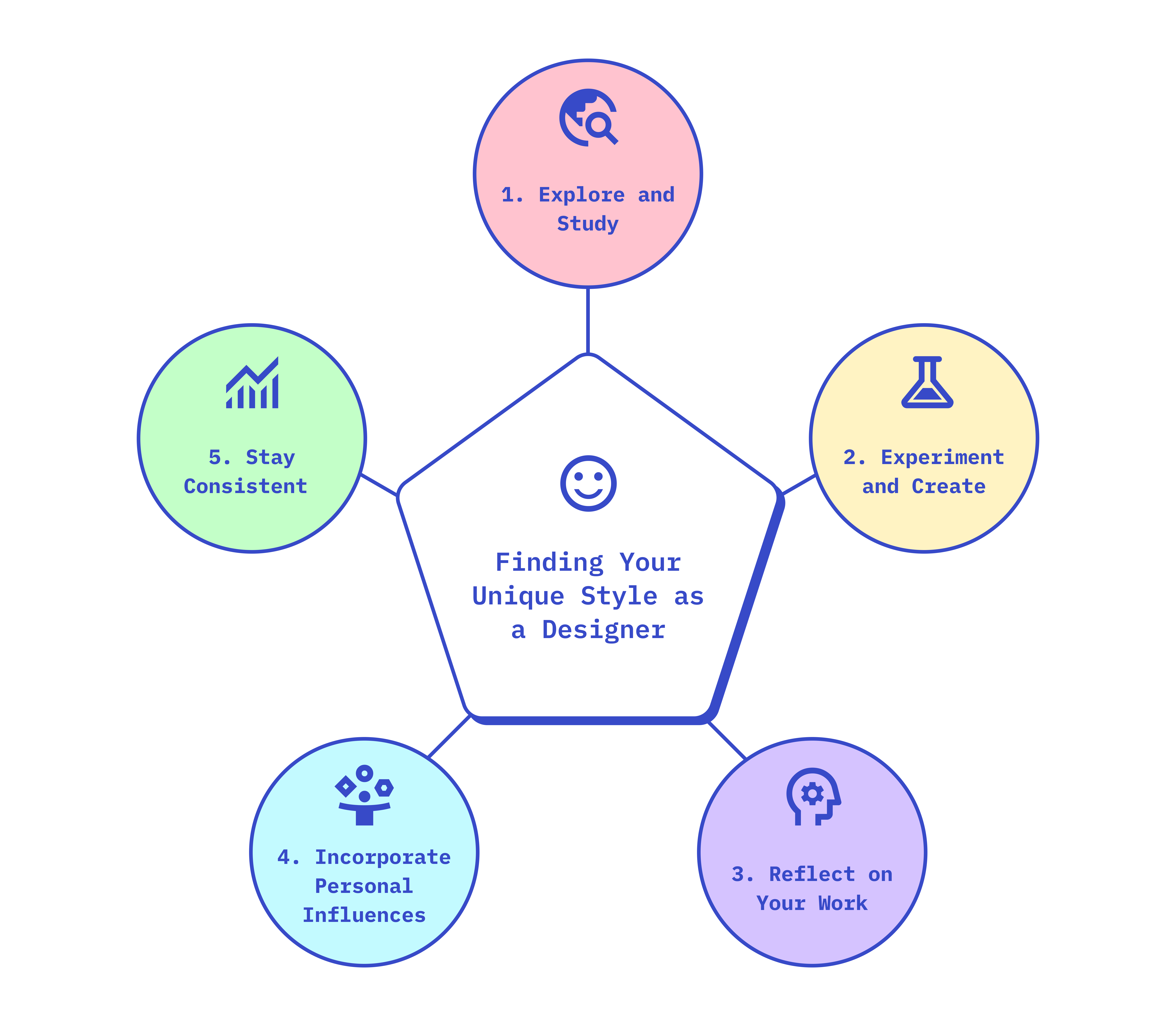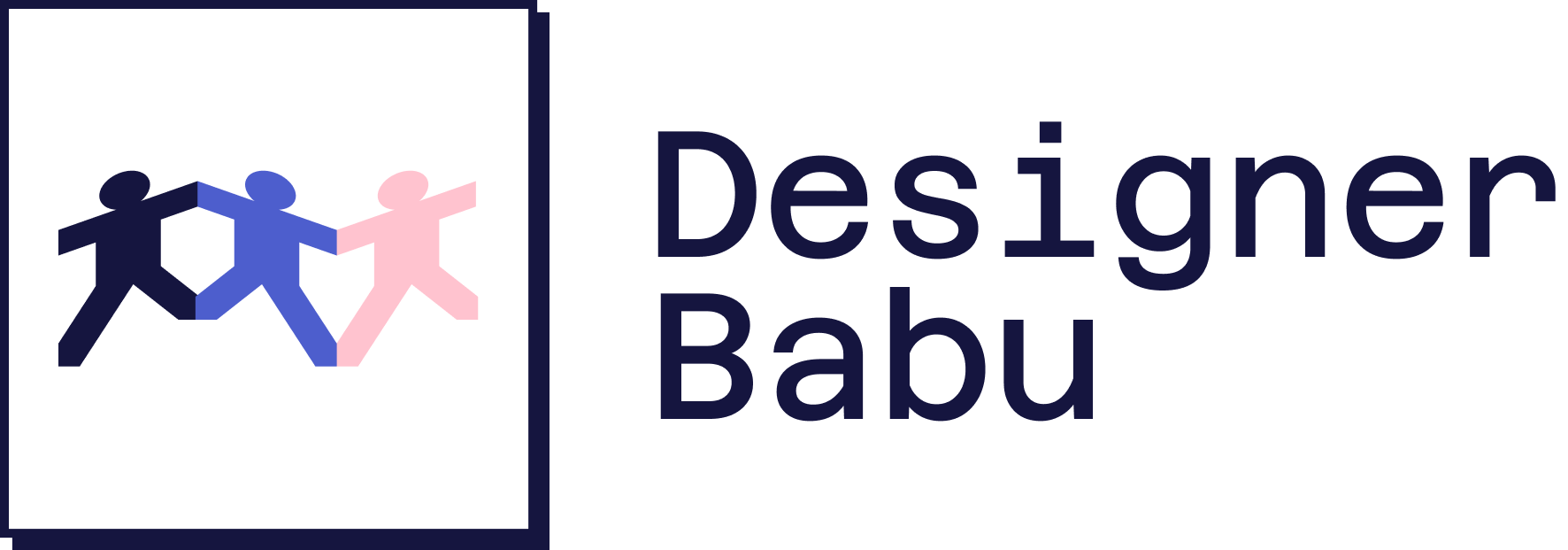Finding Your Unique Style as a Designer
Questions to ask yourself as a Designers
Designing Unique

Finding your unique style as a designer is a journey that involves exploration, self-discovery, and constant refinement. It’s a path that encourages you to embrace feedback instead of validation, recognizing that every designer approaches problems with distinct philosophies and skill sets. Since no two people share the exact same perspective, seeking validation can be a futile pursuit. Instead, focusing on constructive feedback allows you to grow and refine your style.
While validation often aims to rank designs, feedback encourages a more valuable mindset: improving the design itself. Genuine feedback focuses on the work, not the person behind it. By choosing feedback over validation, you build resilience against discouraging or negative criticism that does not help you grow. Criticism should always be objective rather than subjective, centered on the design rather than on you as a designer. This mindset not only helps you in assessing the feedback you receive but also informs how you give feedback to others.
Developing your unique design style involves exploration, experimentation, and self-reflection. Here are steps to help you uncover your personal approach:
1. Explore and Study
- Diverse Inspirations: Immerse yourself in a variety of design styles. Study work across different fields—graphic design, industrial design, fashion, architecture—to gain fresh perspectives.
- Analyze and Reflect: Identify the elements that resonate with you, like colors, shapes, or compositions. Knowing what appeals to you helps form the foundation of your style.
2. Experiment and Create
- Practice Regularly: The more you design, the more you discover about your strengths and preferences. Frequent practice fosters creativity and helps you uncover your unique design voice.
- Try New Approaches: Step outside your comfort zone by experimenting with different techniques, tools, and projects. Unexpected discoveries during experimentation often lead to exciting stylistic developments.
3. Reflect on Your Work
- Identify Patterns: Look through your portfolio and note recurring themes or techniques. Recognizing these can provide insight into your natural inclinations.
- Seek Constructive Feedback: Share your work with others who can offer unbiased, constructive feedback. This process highlights areas for refinement and showcases how your style is perceived.
4. Incorporate Personal Influences
- Leverage Your Interests: Infuse your work with your personal passions and experiences. Whether it’s a love for nature, technology, or culture, adding these elements brings authenticity to your designs.
- Tell Your Story: Use your designs to express your personal narrative and perspective. This authenticity differentiates your work and helps it resonate with others.
5. Stay Consistent
- Develop a Signature: Over time, cultivate a consistent approach in your work—be it through specific typography, color schemes, or motifs. This consistency becomes a recognizable part of your style.
- Document Your Journey: Keep a journal of your design process and reflections. Tracking your evolution helps you stay mindful of growth and motivates you to continue pushing your boundaries.
Reflection Questions for Developing Your Design Style
Use these introspective questions to gain clarity and insight into your unique approach.
1. What inspires me the most?
Purpose: Identify the sources of your inspiration, whether it’s nature, technology, art, culture, or everyday life.
2. Which design elements do I naturally gravitate toward (e.g., colors, shapes, textures)?
Purpose: Understand your inherent preferences and the elements that frequently appear in your work.
3. What do I want to communicate through my designs?
Purpose: Clarify the messages, emotions, or stories you aim to convey through your design work.
4. How do my personal interests and hobbies influence my design work?
Purpose: Recognize how your non-design interests can shape and enrich your creative output.
5. Which designers or artists do I admire, and why?
Purpose: Reflect on the qualities in other designers’ work that resonate with you.
6. What design projects have I enjoyed the most, and why?
Purpose: Identify the types of projects that bring you the most satisfaction, helping you focus on what you love.
7. What are my strengths and weaknesses in design?
Purpose: Assess your skills to understand your strengths and where you can improve.
8. How do I handle constructive feedback and critique?
Purpose: Evaluate your openness to feedback and how it influences your growth.
9. What recurring themes or patterns can I identify in my portfolio?
Purpose: Analyze your work to find common techniques or styles that may define your approach.
10. How do I stay motivated and creatively energized?
Purpose: Discover what keeps your creativity flowing and passion for design alive.
Conclusion
Finding your unique style as a designer is an evolving journey of exploration, experimentation, and self-reflection. By seeking constructive feedback over validation, you focus on growth and objective improvement, fostering resilience against criticism. Immersing yourself in diverse inspirations, practicing consistently, and reflecting on your work helps uncover your natural preferences and strengths.
Infusing personal passions and experiences into your designs adds authenticity and depth, while developing consistency in your approach creates a recognizable signature. Embracing this process with curiosity and openness allows you to craft a style that is distinctively yours, continually growing with your creative journey.

Leave a Reply